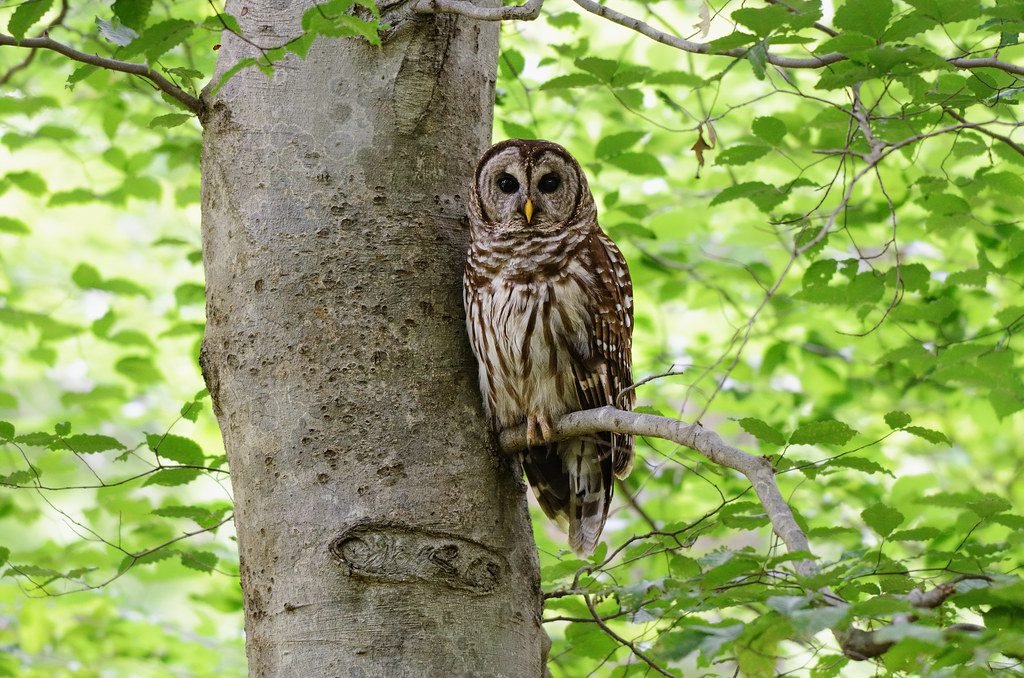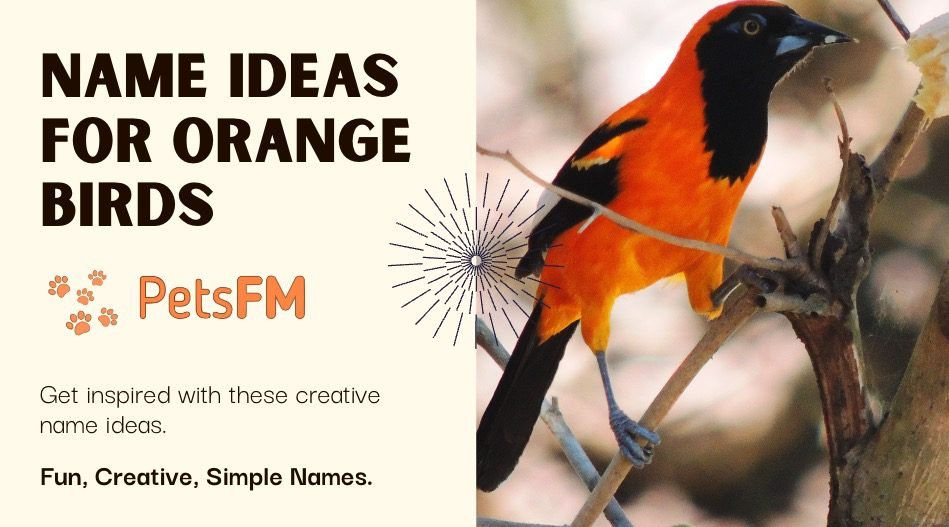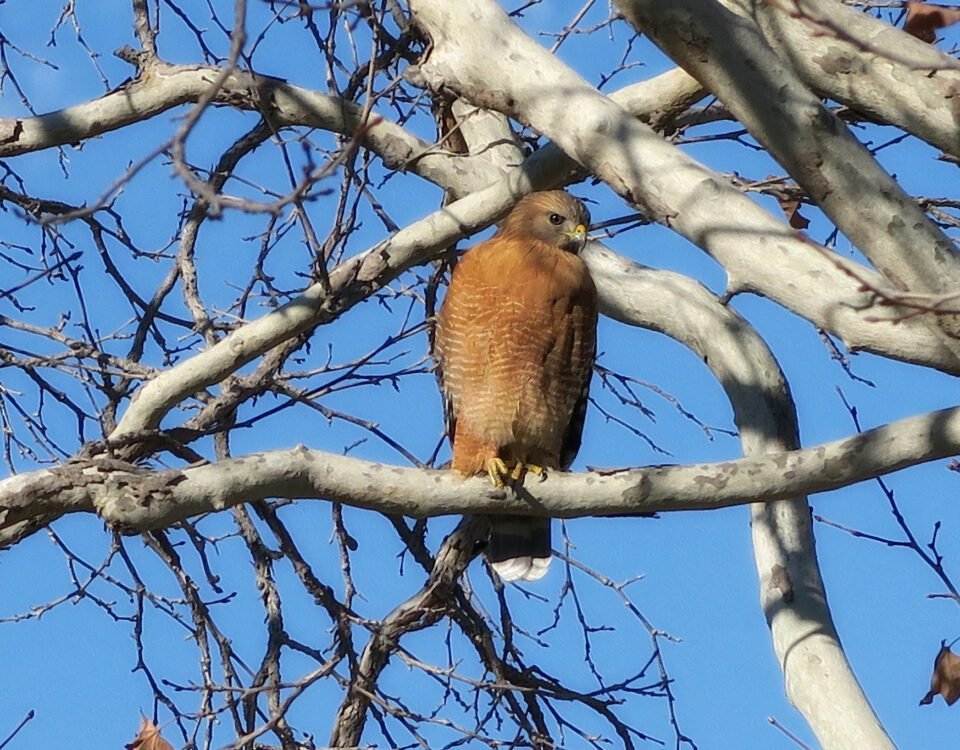


100+ Bird Names In Arabic With Translation in English [UPDATED]
October 18, 2023


100+ Bird Names In Hindi With Translation in English [UPDATED]
October 18, 2023Urdu has been the language of poets and artists for centuries, with its harmonious tones and rich linguistic history.
One of the areas where its beauty truly shines is in the depiction of nature, particularly birds. Birds, symbolizing freedom, beauty, and diversity, are special in Urdu poetry and prose.
In this article, we dive into the names of 100+ birds, presenting them in English, their transliteration in Roman Urdu, and their written form in the Urdu script, complemented with brief descriptions.
Related Read: 100+ Bird Names In Bengali With Translation in English


Bird Names in Urdu
100+ Bird Names In Urdu
The following are 50 common bird names with their Urdu translation.
1: Sparrow (Chiriya | چڑیا)
A petite bird, ubiquitous in urban and rural settings alike, known for its chirpy nature and familiar presence.
2: Peacock (Mor | مور)
India’s national bird, the peacock, is celebrated for its magnificent plume and its ethereal dance during monsoons.


Violette Peacock
3: Pigeon (Kabootar | کبوتر)
A symbol of peace, often found in cities, known for its cooing sound and gentle demeanor.
4: Crow (Kauwa | کوا)
An intelligent, adaptable bird, omnipresent in urban settings, known for its cawing and intelligence.
5: Parrot (Tota | طوطا)
Parrots are vividly green, often kept as pets, renowned for their ability to mimic sounds.


Amazon Parrot
6: Eagle (Uqab | عقاب)
A majestic bird of prey with keen eyesight, representing freedom and power.
7: Owl (Ullu | الو)
A nocturnal bird with a distinct hoot, owls are often associated with wisdom in Western cultures and sometimes superstition in Eastern ones.


Owl on a Tree
8: Kingfisher (Ramchirya | رام چڑیا)
Brightly colored, usually found near water bodies, it is recognized by its swift diving action to catch fish.
9: Woodpecker (Lakadbaggha | لکڑبگا)
Known for pecking at tree trunks, it has a sharp beak and produces a rhythmic drumming sound.
10: Crane (Saras | سارس)
Elegant and tall, often seen in wetlands, they are known for their long migrations and graceful dances.
11: Duck (Batakh | بطخ)
Web-footed birds commonly found in ponds and rivers, recognized by their quacking.
12: Swan (Rajhans | راجہنس)
Grace personified, with their pure white feathers and elongated necks, swans often symbolize love and fidelity.
13: Cuckoo (Koyal | کوئل)
Distinct for its melodious call, signifying the onset of spring in the subcontinent.
14: Myna (Maina | مینا)
Black and bright, they are known for their vocal skills and friendly nature.
15: Dove (Fakhta | فاختہ)
Doves symbolize peace and hope with a calming presence and a gentle cooing sound.
16: Vulture (Gidh | گدھ)
Large scavenging birds are vital for the ecosystem; they clean up by feeding on carrion.
17: Quail (Bater | بٹیر)
Small ground birds, camouflaged in their surroundings, often hunted for game.
18: Falcon (Baaz | باز)
Fast and fierce raptors known for their agility and hunting prowess.
19: Heron (Bagla | بگلا)
With long legs and slender necks, they stand still at the water’s edge, waiting to catch their prey.
20: Penguin (Penguin | پینگوئن)
Flightless adapted to cold climates, they waddle on land but are graceful swimmers.


Adélie Penguin
21: Ostrich (Shuturmurg | شترمرغ)
The world’s largest bird, native to Africa, it’s flightless but known for its fast running speed.
22: Pheasant (Fezant | فیزنٹ)
Distinguished by its vibrant colors, it prefers the ground and is often found in woodlands.
23: Seagull (Samundari Parinda | سمندری پرندہ)
Often seen near coastal areas, they are known for their raucous calls and scavenging habits.
24: Pelican (Pelikan | پیلیکان)
Renowned for its large bill and a throat pouch, it’s often seen scooping up fish from the water.
25: Stork (Saaras | سارس)
Long-legged waders, known for their long migrations; folklore often associates them with delivering babies.
26: Flamingo (Flamingo | فلیمنگو)
Identified by their pink feathers and unique beak, they are filter feeders often seen in salt pans.
27: Nightingale (Bulbul | بلبل)
Famed for its melodious voice, it’s often a symbol of love and poetry in literature.
28: Kite (Cheel | چیل)
Medium-sized birds of prey, they soar high with a distinctive forked tail, hunting for food.
29: Hummingbird (Gunjti Parinda | گنجتی پرندہ)
Tiny, with iridescent colors, they hover near flowers, sipping nectar with their long beaks.


Hummingbird Beak Shape
Related Read: Why Hummingbirds Are More Active In The Rain? EXPLAINED!
30: Canary (Kanari | کناری)
Bright yellow and petite, they are known for their singing prowess and are popular as cage birds.
31: Robin (Robin | روبن)
Identified by their red breast, they are lively birds signaling the onset of spring in many cultures.
32: Magpie (Magpai | میگپائی)
Distinguished by their black and white plumage, they’re known for their intelligence and sometimes mischievous behavior.
33: Rook (Rook | روک)
Part of the crow family, these are friendly birds often seen in agricultural areas.
34: Moorhen (Daldal Murgh | دلدل مرغ)
Distinguished by their green legs and red beak, they are frequent visitors to ponds and marshes.
35: Hoopoe (Hudhud | ہدہد)
Known for its unique crown of feathers, its name is derived from its distinct call.
36: Toucan (Toucan | ٹوکین)
Native to Central and South America, they’re known for their vibrant, large bills.
37: Puffin (Puffin | پفن)
Distinguished by their colorful beaks, they’re excellent swimmers and are often found in colder northern regions.


The Puffin
38: Finch (Finch | فنچ)
Small passerine birds, recognized by their melodious voices, they often feed on seeds.
39: Cormorant (Jal Kauwa | جل کوا)
Water birds that dive to catch fish; they’re often seen spreading their wings to dry.
40:Lapwing (Titeeri | ٹٹیری)
Known for their unique calls and distinctive crest, they’re commonly found in open lands.
41. Emu (Emu | ایمو)
Native to Australia, this large flightless bird is recognized for its strong legs and brownish feathers, often seen roaming in open plains.
42. Babbler (Bakbak Karne Wala Parinda | بکبک کرنے والا پرندہ)
A sociable bird, often moving in noisy groups, they have varied calls and are commonly found in dense habitats.
43. Sunbird (Surajmukhi | سورجمکھی)
A small bird, it displays iridescent colors, primarily feeding on nectar, akin to hummingbirds but found in the Old World.
44. Wagtail (Dum Hilane Wala | دم ہلانے والا)
Named for its tail-wagging behavior, these slender birds are often seen near water, flaunting their agile walk.
45. Drongo (Drongo | ڈرانگو)
A sleek bird with a forked tail, known for its agile flight, it can mimic a variety of bird calls.
46. Warbler (Geet Gane Wala Parinda | گیت گانے والا پرندہ)
Small and lively, warblers are celebrated for their melodious songs and are commonly found in thickets and wooded areas.
47. Osprey (Machhli Khane Wala Uqab | مچھلی کھانے والا عقاب)
A raptor specializing in fish, it dives feet-first to snatch its prey, showcasing a remarkable hunting style.
48. Sandpiper (Reit Par Chalne Wala | ریت پر چلنے والا)
A small wader with a probing bill, it’s commonly seen along coastlines, beaches, and wetlands.
49. Hornbill (Singh Mukhi | سنگھ مکھی)
A tropical bird, identified by its oversized beak and a prominent casque, plays a pivotal role in forest ecology by dispersing seeds.
50. Skylark (Asmani Alauda | آسمانی علودہ)
Known for its elevated song flights, this bird possesses a captivating voice, making it emblematic of open countrysides and poetic inspirations.
Editor’s Pick: What Colors Can Birds See?
51. Horned Lark (Singdari Alauda | سنگداری علودہ)
A small brown songbird with feather tufts, it prefers open countrysides and is known for its hovering song flights.
52. Atlantic Puffin (Atlantic Puffin | ایٹلانٹک پفن)
With its colorful striped beak, this seabird nests in cliff burrows and is an excellent swimmer, found in northern regions.
53. European Goldfinch (Sunehri Finch | سنہری فنچ)
A lively finch with bright plumage, it’s celebrated for its captivating song and displays swift, bounding flight.
54. Common Hawk-Cuckoo (Aam Baaz Koyal | عام باز کوئل)
This slim bird is a master of camouflage with its barred plumage that resembles bark, best known for its “brain fever” call.
55. Common Kingfisher (Aam Machhli Khane Wala | عام مچھلی کھانے والا)
This vividly colored bird nests in burrows along waterfronts and plunges into water to catch fish.
56. Eurasian Tree Sparrow (Evropi Darakhti Chiriya | یوروپی درختی چڑیا)
Related to the house sparrow, it sports a chestnut crown and is commonly found in small flocks among trees.
57. Red-whiskered Bulbul (Surkh Mooche Wala Bulbul | سرخ موچے والا بلبل)
Native to Asia, this songbird is distinguished by red cheek patches and crests. It is known for its rich, melodious call.
58. Common Rock Pigeon (Aam Pathar Kabootar | عام پتھر کبوتر)
This familiar grey bird thrives in cities worldwide, often seen perched on buildings. It symbolizes love and peace in many cultures.
59. Oriental Turtle Dove (Mashriqi Kaptar | مشرقی کپتر)
Sometimes kept as pets, this soft-colored dove produces a low, melodious call associated with summer’s arrival.
60. Northern Goshawk (Uttari Baz | اتاری باز)
A powerful raptor of northern forests with fierce red eyes, it possesses great agility andspeed in flight.
61. Common Chiffchaff (Aam Chiffchaff | عام چف چف)
This dull-colored woodland warbler flicks its tail and wings while hopping through trees, singing its name “chiff-chaff.”
62. Eurasian Curlew (Evropi Karvat | یوروپی کڑواٹ)
One of the largest shorebirds with a long, downcurved bill, its haunting call evokes loneliness across wetlands and mudflats.
63. Mistle Thrush (Chandan Myna | چندن مینا)
Slightly larger than the song thrush, it gets its name from its appetite for mistletoe berries and bold upstanding posture.
64. Willow Ptarmigan (Behta Jesar Murga | بیتھا جیسر مرغ)
Camouflaged in its habitat, this grouse sports feathered feet for warmth and switches plumage from brown to white with seasons.
65. European Green Woodpecker (Evropi Hara Lakadbaggha | یوروپی ہارا لکڑبگا)
As the name suggests, this vivid green woodpecker is native to Europe and is known for its laughing call.
66. Common Ringed Plover (Aam Halqi Titeeri | عام حلقی ٹٹیری)
A small shorebird with a black and white ringed neckband, it runs swiftly on sand and mudflat habitats.
67. Little Egret (Chhota Bagla | چھوٹا بگلا)
A snowy white heron with dark legs, it can be found patiently stalking for fish in shallow waters.
68. Rose-Ringed Parakeet (Gulabi Halqi Tota | گلابی حلقی طوطا)
Common in cities, this gregarious parakeet has a distinctive red ring around its neck and a raucous squawking call.


Red Crowned Parakeet
69. Common Swift (Aam Tez Udaan | عام تیز اڑاں)
A superb aerialist, it lives in perpetual flight feeding on insects caught in mid-air. Known for its speedy, stiff-winged flight and shrill scream.
70. Western Capercaillie (Maghribi Kala Titar | مغربی کالا تیتر)
The largest grouse species sporting black plumage and white wing bars, famous for its elaborate mating display dance in spring.
71. Eurasian Blue Tit (Evropi Neeli Ginti | یوروپی نیلی گنتی)
A brightly colored songbird, it can hang upside down while feeding and is known for agile movements among tree branches.
72. Collared Dove (Gala Yala Kabootar | گلا یالا کبوتر)
Named for the dark stripe on its nape, it gives a resonant purring call associated with spring and rain.
73. Common Stonechat (Aam Pathar Bhesiyala | عام پتھر بھیسیالا)
A small chat adorning a smart black head and orange breast, the male has a habit of tail flicking.
74. Common Redshank (Aam Surkh Dong| عام سرخ ڈنگ)
This elegant wader has bright red legs and a sharp alarm call, wading actively in wetlands while bobbing its head.
75. Grey Francolin (Dhundla Titar| دھندلا تیتر)
This ground bird of open scrublands has a diagnostic grey color and a repetitive call sounding like “fraan-fraan-fraancolin.”
76. Common Crane (Aam Karkarra | عام کرکڑا)
A large elegant crane with a loud trumpeting call, they form spectacular dancing congregations during winter.
77. Great Pied Hornbill (Bara Dhabbi Singh Mukhi | بڑا دھبی سنگھ مکھی)
One of the most giant hornbills with a casque and striking black-and-white plumage, commonly found in wooded habitats.
78. Yellowhammer (Peela Gehra | پیلا گیھرا)
A bright yellow bunting with a characteristic head pattern, the male has a flight song sounding like “a little bit of bread and no cheeeese.”
79. Common Wood Pigeon (Aam Jungli Kabootar | عام جنگلی کبوتر)
Larger than its feral cousin, this dusky wild pigeon emits a resonant cooing call and claps its wings in flight.
80. Laughing Dove (Hansmukh Kabootar | ہنسمکھ کبوتر)
Native to Africa, this small dove has a distinctive laughing call – a low, fast hoopoe – often given in duets.
81. Common Quail (Aam Bater| عام بٹیر)
A plump bird with a distinctive head crest, its calls of “wet my lips” from long grass betrays its presence.
82. Common Grackle (Aam Mayna | عام مینا)
An iridescent blackbird with pale eyes found in farmlands, it walks with a swagger flaunting its bronzed feathers.
83. Red-billed Chough (Surkh Mooh Wala Chough | سرخ منہ والا چو)
With curved red bills and legs, these agile birds of mountains and coasts are known for spectacular aerial displays.
84. Eurasian Woodcock (Evropi Lakri Kukkad | یوروپی لکڑی ککڑ)
A plump wading bird that inhabits woodlands, resting by day and feeding by night on its lengthy bill probing deep in mud.
85. Common Snipe (Aam Batairya Chaha | عام بطیریا چھاہا)
A slender-bodied freshwater shorebird bearing buff stripes and cryptic plumage, it produces a distinctive drumming sound during courtship flights.
86. Common Cuckoo (Aam Koel | عام کوئل)
Famous for laying eggs in other birds’ nests, the male’s characteristic “cuckoo” call is a harbinger of spring in Europe.
87. Eurasian Eagle Owl (Evropi Uqab Ullu | یوروپی عقاب الو)
One of the largest owl species, instantly recognized by its orange eyes and ear tufts, it excels at night hunting.
88. Common House Martin (Aam Makan Chhirya | عام مکان چھڑیا)
Related to swallows, these agile flyers have a distinctive white rump, foraging insects mid-flight and nesting under roofs.
89. Eurasian Sparrowhawk (Evropi Chiriya Shaheen| یوروپی چڑیا شاہین)
A small raptor with barred underparts that flies low through woods to ambush smaller birds.
90. Great Cormorant (Bara Jal Kauwa | بڑا جل کوا)
A large aquatic bird with a hooked bill, it perches with outstretched wings and dives for fish underwater.
91. Greater Flamingo (Bara Gulabi Flamingo | بڑا گلابی فلیمنگو)
Recognizable by its huge bent bill and graceful neck, this vibrant wader filters food upside down in shallow water.
92. Common Moorhen (Aam Daldal Murgh | عام دلدل مرغ)
With a frontal shield and red and yellow bill, this dark waterbird dabbles at the edge of ponds and flies with its feet trailing.
93. Eurasian Oystercatcher (Evropi Kalchidi | یوروپی کلچھڑی)
Called the “sea pie” for its black and white plumage, this wader uses its bright bill to pry open molluscs.
94. Common House Sparrow (Aam Ghar Ka Chiriya | عام گھر کا چڑیا)
Universally known, this tame bird has adapted to cities worldwide, recognizable by its black bib and incessant chirping.
95. Spotted Owlet (Dhabba Ullu | دھبا الو)
A small owl with brown upperparts covered in white spots and dashes, it hides in tree holes during daytime.
96. Laughing Kookaburra (Hansnewala Kookaburra | ہنسنیوالا کوکابرا)
This Australian kingfisher is renowned for its laughing territorial call, sounding like a variety of trills and chuckles.
97. Common Raven (Aam Kaag | عام کاگ)
One of the largest all-black songbirds with a croaking call, celebrated as an intelligent trickster in folklore worldwide.
98. Red Junglefowl (Surkh Jangli Murgh | سرخ جنگلی مرغ)
The wild ancestor of chickens native to Asia, the male has an elaborate courtship routine and loud, shrill crowing.
99. Snowy Owl (Barfani Ullu | برفانی الو)
A large white owl of the Arctic with black barring and luminous yellow eyes, it was made famous by the Harry Potter series.
100. Common Pheasant (Aam Titar | عام تیتر)
A popular game bird introduced worldwide, the male has a long tail and brilliant red facial skin during mating season.
Urdu Idioms and Metaphors Inspired by Birds
Birds have inspired many Urdu idioms and metaphors over time. For example, “ullu ka pattha” (owl’s baby) means a foolish person, while “kabootar baaz” (pigeon flyer) refers to someone in love.
Iconic Birds in Urdu Literature
Certain birds like the bulbul, koel, and parrot are iconic in Urdu, featuring heavily in poetry and prose as symbols of love, spring, and nature’s beauty.
Conclusion
In conclusion, Urdu’s poetic connection with nature is beautifully reflected in its descriptions of birds. These birds, each with its own unique traits and symbolism, have been celebrated in Urdu literature for generations.
From the powerful eagle to the melodious cuckoo, these bird names in Urdu showcase the language’s deep appreciation for the natural world, evoking a universal fascination with nature’s beauty while transcending language and cultural boundaries.
Next Read: 80+ Bird Names In Hindi With Translation in English [UPDATED]
Next Read:



